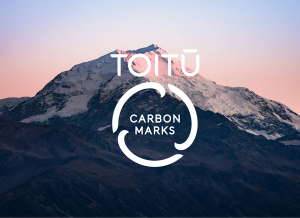Built for impact. Backed by science. Trusted by business.
We’re New Zealand’s standard-bearers for credible climate and environmental action. Our science-led certifications, assurance, and advisory services help businesses reduce emissions, improve operational performance, and gain a competitive edge.
Real climate science.
Real business impact.
Next Event
Environmental management for real business impact
Join our experts and Epicurean Dairy (aka The Collective) to discover how Environmental Management Systems can drive efficiency, reduce risk, and build credibility.
( OVERVIEW )
Why take
action?
Toitū helps you stay ahead with science-led action that reduces risk, improves performance, and builds long-term advantage.
1.
Regulation, Risk & Resilience
Climate and carbon reporting are no longer optional. Understanding your exposure and readiness builds confidence and compliance.
2.
Operational Efficiency
Reducing emissions helps identify inefficiencies across energy, logistics, and supply chains—unlocking cost savings and performance gains.
3.
Market Access
Climate alignment is becoming a requirement for access to capital, procurement, and supply chains. Credible action builds trust.
4.
Competitive Advantage
Acting now strengthens your reputation, attracts talent, and ensures you're ready for the future. Sustainability is strategic.
We help businesses embed legitimate sustainable practice.
Our services and programmes help businesses assess and take action on their environmental and climate impact. In turn, this helps to reduce costs, increase market access, improve staff engagement, and take credible action toward more sustainable ways of working.
Climate impact & Carbon certification

A trusted independent certification for reducing greenhouse gas emissions. Assess your climate impact and develop a transition plan with a science-led certified programme built for credible, lasting impact.
Enviromark certification

A certification for developing environmental management systems. Ensure your organisation minimises its environmental footprint, complies with legal requirements, and demonstrates a strong commitment to sustainability.
Advisory services

Turn ambition into action with expert guidance, tailored strategies, and data-driven solutions to meet your unique sustainability goals.
Greenhouse gas assurance

Build trust and meet compliance with independent greenhouse gas assurance. Ensure your GHG data is accurate, credible, and aligned with global standards, to support confident decision-making and reporting.
Climate Related Disclosures (CRD)

Navigate mandatory climate-related disclosure reporting with confidence. From tailored advisory or assurance services to certification - ensure your climate reporting is accurate, credible, and trusted by stakeholders.
( Since 2001 )
We help

businesses
to have credible impact...
4,941
certificates issued
recognising climate impact
283.6
million tonnes
CO2e verified
35%
carbon reduction
members achieve over 3 years
Latest
success stories
Discover which service best suits your current business needs
The sector we are working in is
and we are a
enterprise
Our top priorities when it comes to sustainability are:
Our current progress in sustainability is
and we aiming to achieve our goals within
Living our values
At Toitū, our values guide every action we take, from how we certify businesses to how we treat the environment and our partners:
We shape the future
As stewards of the climate response, we apply an intergenerational lens to our work, prioritising long-term sustainability and democratising our expertise to make an impact at scale.
We are better together
We believe in the power of connection and relationships. By respecting the land, our communities, and diverse cultures, we continuously learn, innovate, and achieve better results together.
We hold the standard
As experts in our field, we are committed to upholding the highest standards of science, data, and environmental excellence. Our organisational actions are firmly grounded in best practice and integrity.







